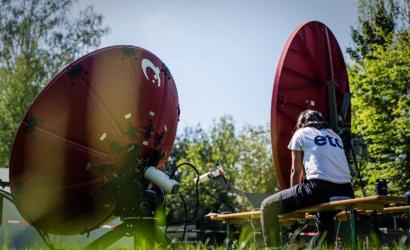Lebanon
Lebanon is a mountainous country in the Levant with a coastline on the eastern Mediterranean Sea. It borders Israel in the south and Syria in the north and is the smallest nation on the Asian mainland. Thirteen years into the Syrian conflict, nearly 1.5 million Syrian refugees are currently living in Lebanon. With a population of 6.1 million, Lebanon is host to the largest number of refugees per capita in the world.
Lebanon is impacted by surrounding regional conflict and an unfolding national economic crisis that began in October 2019. The crisis was further exacerbated by the dual economic impact of the COVID-19 outbreak, and the massive Port of Beirut explosion in August 2020. See the ‘Lebanon: Beirut Port Explosions’ for the ETC assessment response in 2020.
Additionally, the ETC supported shared security communications services in Lebanon from 2013 until 2021 as part of the cluster response to the Syrian crisis―the Whole of Syria (WoS) approach comprised activities in Türkiye, Lebanon, and Jordan for an effective humanitarian response inside Syria (now only Türkiye).
An ETC assessment and preparedness mission was held in Lebanon in January 2023 after humanitarian actors raised concerns on the reliability of ICT services in the country to the Humanitarian Country Team (HCT). Following the two-week assessment, the ETC proposed a series of preparedness and readiness measures to be undertaken by the humanitarian community in country.
Since 08 October 2023, tensions along the Lebanon-Israel border have escalated, following rockets launched by Hezbollah toward Israel in solidarity with Hamas' attack on Israel on 07 October 2023. Israel retaliated by firing heavy artillery toward southeastern Lebanon. Conflict drastically escalated on 23 September with large military activities targeting South, Bekka regions and extending to regions previously untouched by the conflict. As of October 2024, the number of civilian casualties and displaced population in Lebanon has surged amidst escalating conflict, with clashes that were previously confined to the border now spreading to greater distances in Lebanon to include Beirut and Israel.
Led by the Lebanese Prime Minister, the Presidency of the Council of Ministers oversees national preparedness and response efforts, supported by the National Disaster Risk Management (DRM) Unit. The HCT in Lebanon, led by the UN Office for the Coordination of Humanitarian Affairs (OCHA) and supplementing national efforts, continues its response readiness and preparedness activities to meet the humanitarian needs of the people affected by the increase in hostilities.
ICT Profile
National Disaster Risk Management (DRM) Unit
Ministry of Telecommunications
Telecommunications Regulatory Authority
6.1 million
Lebanon is a mountainous country in the Levant with a coastline on the eastern Mediterranean Sea. It borders Israel in the south and Syria in the north and is the smallest nation on the Asian mainland. Thirteen years into the Syrian conflict, nearly 1.5 million Syrian refugees are currently living in Lebanon. With a population of 6.1 million, Lebanon is host to the largest number of refugees per capita in the world.
Lebanese pound
16
77
7.7
77.8
56.9
68%
Law 431/2002, or the Telecommunications Law as it is often referred to, was issued in 2002 to provide the framework for governing the organization of the telecommunications services sector and to set the rules for its transfer to the private sector.
The present Law regulates the Telecommunications Services sector in the Lebanese Territories and includes the rules for its transfer, or the transfer of its administration, in full or in part, to the private sector, including the role of the State in the telecommunications sector.
